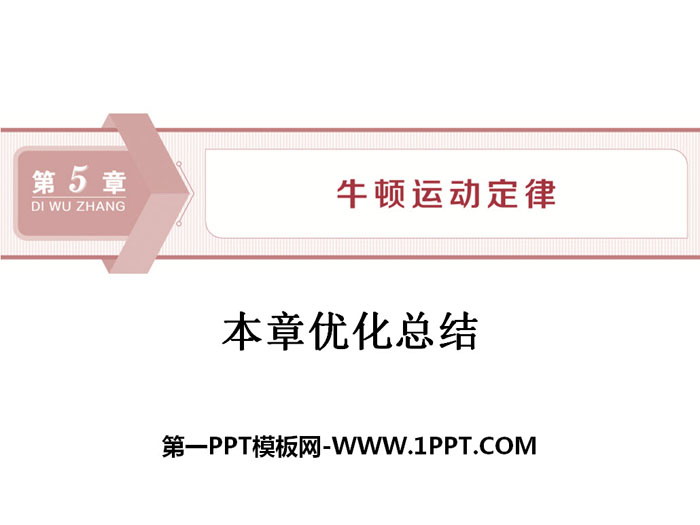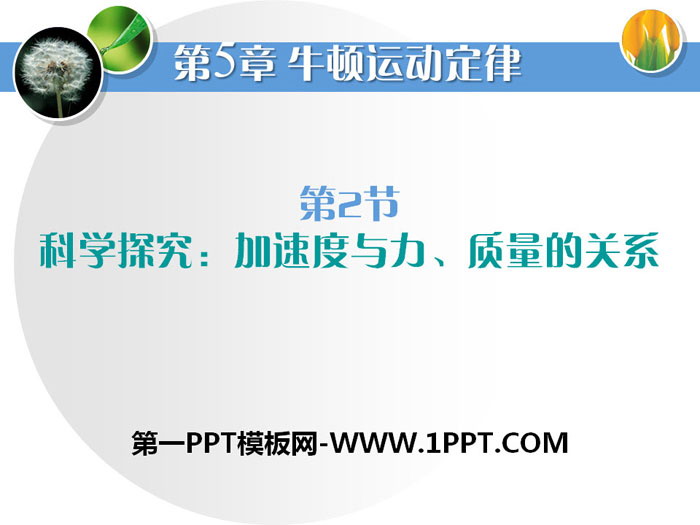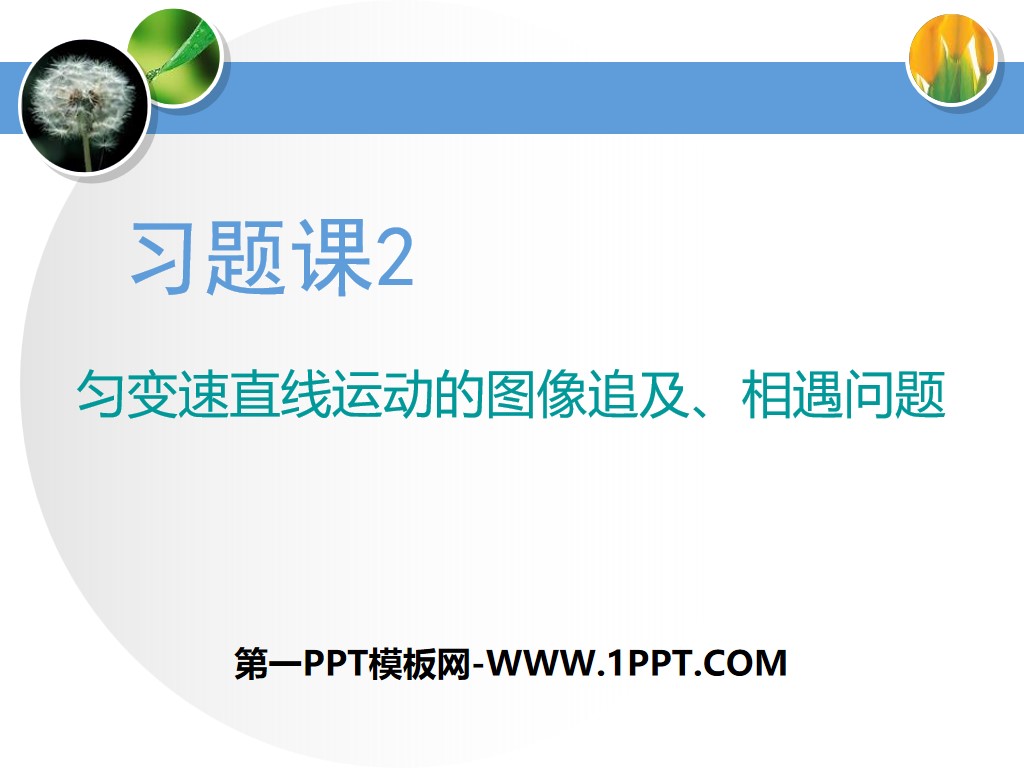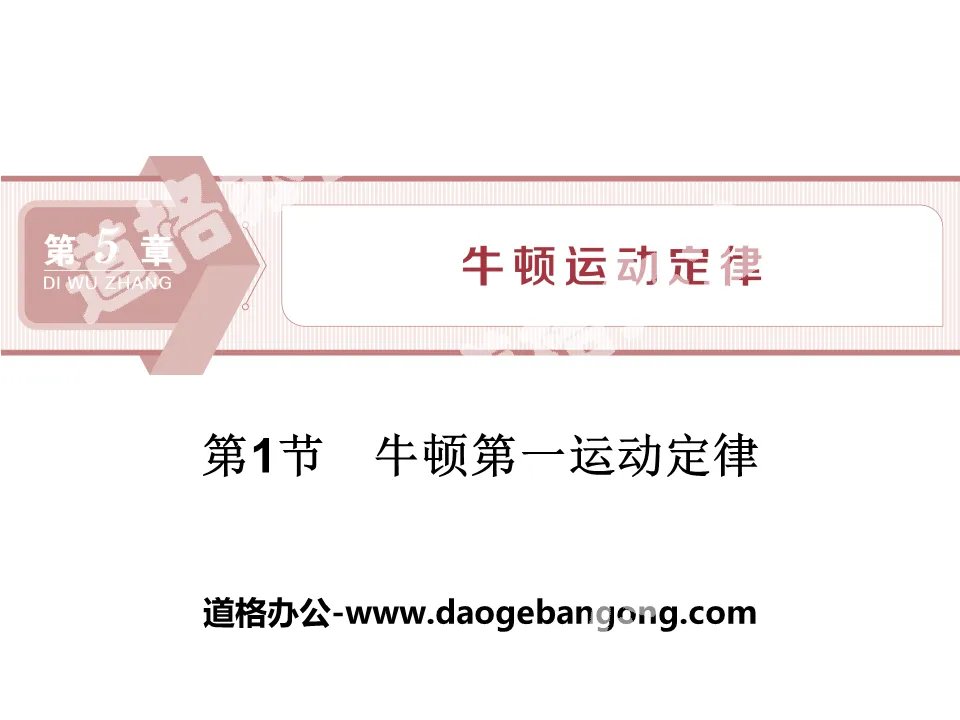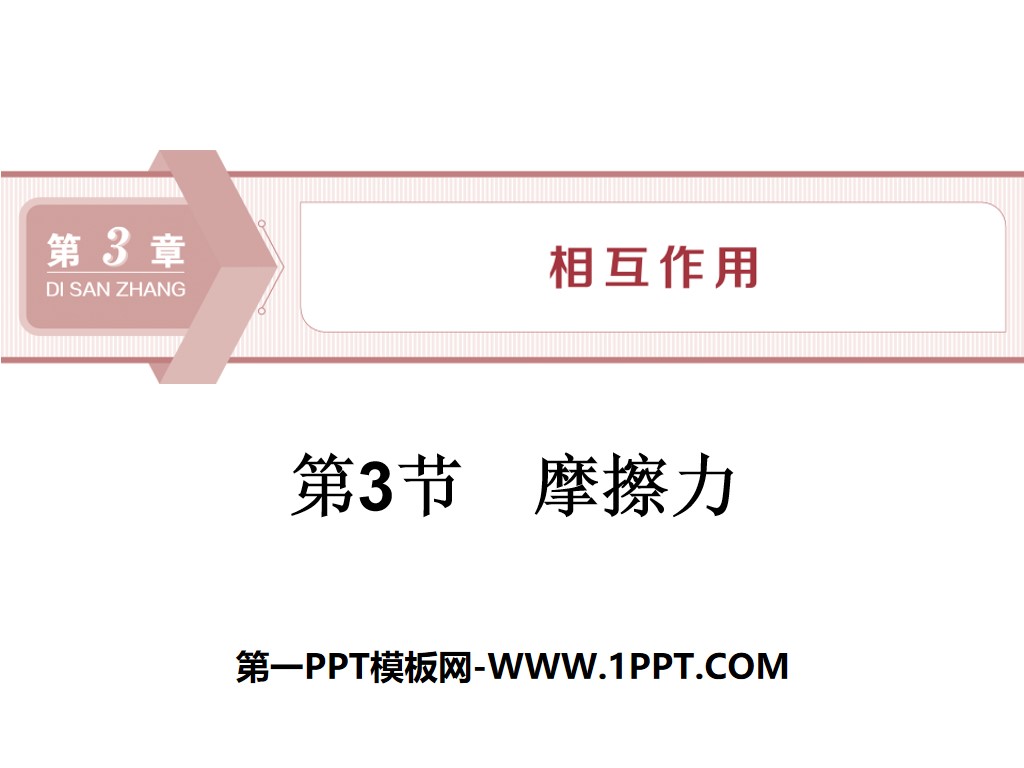
| Category | Format | Size |
|---|---|---|
| Lu Ke Edition High School Physics Compulsory Course One | pptx | 6 MB |
Description
"Friction" interaction PPT
Part One: Learning Objectives
1. Know the conditions under which sliding friction occurs, and be able to determine its direction and calculate the magnitude of sliding friction.
2. If you know the conditions under which static friction occurs, you can determine its direction and solve for the magnitude of static friction.
3. Learn how to regulate friction through observation of life phenomena.
Friction PPT, part 2: exploration of new knowledge
Basic combing
1. Sliding friction
1. Sliding friction: When two objects contact and squeeze each other and slide relative to each other, a force is generated on the contact surface that hinders relative sliding.
2. Direction of sliding friction: The direction of sliding friction is always tangent to the contact surface and opposite to the direction of relative motion of the object.
3. The magnitude of sliding friction
(1) The size of the sliding friction force: The size of the sliding friction force f is proportional to the pressure N.
(2) Formula: f = μN, where N represents pressure, μ is called the kinetic friction factor, and the value of μ is related to the material of the two objects and the condition of the contact surface (roughness, dryness and wetness).
2. Static friction
1. Static friction: When two objects that are in contact or squeezing each other do not slide relative to each other, but have a tendency to slide relative to each other, a force that hinders _________ will be generated on the contact surface. This force is called static friction.
2. The direction of static friction: is always tangent to _______ and opposite to the direction of ____________.
3. The magnitude of static friction: determined by _________, changes with changes in external forces.
4. maximum static friction
(1) Definition: _________ of the static friction force between an object and the contact surface, that is, the static friction force when the object begins to slide along the contact surface under the action of an external force, expressed by fmax.
(2)Related factors
① Proportional to the pressure between the two objects.
②Related to the roughness of the contact surface.
3. Control of friction
1. How to increase friction
(1) Increase the _________ degree between contact surfaces.
(2) Increase the _________ between objects.
2. Ways to reduce friction
(1) Reduce the pressure between objects.
(2) Add lubricant between the contact surfaces.
self-test
Thinking Analysis
(1) When an object slides on the surface of another object, friction must occur. ()
(2) The direction of sliding friction is along the contact surface and opposite to the direction of movement of the object. ()
(3) The magnitude of sliding friction is proportional to the gravity of the object. ()
(4) The size of the kinetic friction factor has nothing to do with the size of the sliding friction force. ()
(5) The pattern of car tires is helpful to increase the friction between the tire and the contact surface. ()
basic understanding
Does an object affected by static friction always remain at rest? As shown in the figure, when running, is the friction force experienced by the feet static friction or sliding friction? What's the direction?
Tip: They are not necessarily stationary, the two objects are just relatively stationary. When running, during the time that the foot is in contact with the treadmill, the foot does not move relative to the treadmill, so the friction force experienced by the foot is static friction, and the direction is the same as the direction of human movement.
Friction PPT, the third part: teacher-student interaction
Understanding and calculating sliding friction
Problem guide
Place the wooden block on a horizontal table and use a spring force gauge to pull the wooden block to the right in the horizontal direction, as shown in the figure.
When the force gauge reads 1 N, the block does not move; when the pulling force is gradually increased to 2 N, the block remains stationary; when the pulling force is further increased to 4 N, the block begins to move, and the pulling force suddenly decreases. to 3.8 N. After that, the block moves at a constant speed and the pulling force remains unchanged at 3.8 N.
(1) When the force gauge indicates 1 N, what is the static friction force on the wooden block? When the pulling force is gradually increased to 2 N, what is the static friction force on the block?
(2) As the pulling force increases, how does the static friction change? When the pulling force continues to increase to 4 N, the block begins to move. What does this mean?
(3) After that, the block moves at a constant speed, and the pulling force remains unchanged at 3.8 N. What does this mean?
[Key Tips](1)1 N 2 N
(2) The magnitude of static friction increases with the increase of external force, but has a maximum value. That is, the maximum static friction force between the wooden block and the tabletop is 4 N.
(3) It shows that the sliding friction force between the wooden block and the tabletop is 3.8 N, and the maximum static friction force is slightly larger than the sliding friction force.
【Core Deepening】
1. Conditions for the generation of sliding friction
(1) Two objects contact and squeeze each other.
(2) The contact surface between objects is not smooth.
(3) There is relative motion between the two objects.
2. direction of sliding friction
(1) On the contact surface, it is tangent to the contact surface and opposite to the direction of relative motion of the object.
(2) The direction of movement of the object may be the same or opposite.
3. The magnitude of sliding friction
(1) Formula method: Calculated according to the formula F=μFN.
① The normal pressure FN is the pressure between the object and the contact surface, which is not necessarily equal to the gravity of the object. The size of FN is determined according to the force of the object.
②The dynamic friction factor μ is related to the roughness of the material and the contact surface, but has nothing to do with the pressure between objects and the size of the contact surface.
(2) Two-force balance method: When the object is in equilibrium (uniform linear motion or stationary), the solution is based on the two-force balance condition.
Key competency 1: Understanding of sliding friction
(Multiple choice) Among the following statements about sliding friction, which one is correct ()
A. There must be sliding friction when there is pressure
B. If there is sliding friction, there must be pressure
C. Sliding friction is always perpendicular to the pressure on the contact surface
D. Only moving objects are subject to sliding friction
Key capability 2 Calculation of sliding friction
As shown in the figure, an object A with mass m applies a horizontal force F to it, causing A to slide down the vertical wall at a constant speed. If the kinetic friction factor experienced by object A is μ, then the friction force experienced by object A is ()
A. Ff=μmg upward B. Ff=mg Down
C. Ff=F Downward D. Ff=μF upward
[Exercise to achieve standards]
1. Which of the following statements about sliding friction is correct ()
A. The sliding friction force on an object is proportional to the gravity on the object
B. Sliding friction is always opposite to the direction of motion of an object
C. Sliding friction is always resistance
D. On a rough horizontal surface, the sliding friction force increases with the increase of the positive pressure on it.
2. (2019•Hunan Hengyang Midterm) As shown in the figure, the object moves to the right along the horizontal plane under the action of F=100 N and the direction is horizontal to the left. It is known that the kinetic friction coefficient between the object and the horizontal surface μ = 0.2, and the mass of the object m = 5 kg. It can be seen that the friction force on the object is (g is 10 m/s2) ()
A. 10 N, horizontally to the left B. 10 N, horizontal to the right
C. 20 N, horizontally to the left D. 20 N, horizontal to the right
Judgment of the presence and direction of static friction force
Problem guide
As shown in the figure, two objects are at rest. Answer the following questions:
(1) Is the object in the picture affected by friction? How to determine the direction of friction?
(2) How to judge the direction of relative movement trend?
[Key Points] (1) Although the objects in the figure are in a stationary state, they all have a tendency to move relative to each other. Therefore, they are all affected by static friction. The direction is along the contact surface and is in line with the relative movement tendency of the object. The direction is opposite.
(2) Use the hypothesis method to judge, assuming that the relative motion direction when the contact surface is smooth is the relative motion trend direction.
【Core Deepening】
1. Determining the presence or absence of static friction
(1) Judgment based on the motion state of the object: A and B are stacked together, and object B is pulled with force F, while A and B are both stationary, as shown in Figure A. Assume that object B has friction on A, then A only experiences one force in the horizontal direction and cannot remain stationary, so there is no static friction between A and B. A and B are stacked together, and object A is pulled with force F, while A and B are both stationary, as shown in Figure B. Assume that object B has no friction on A, then A only experiences one force in the horizontal direction and cannot remain stationary, so there is static friction between A and B.
2. direction of static friction
(1) The direction of static friction force is always tangent to the contact surface and opposite to the direction of the relative motion trend of the object.
As shown in Figure A, an object m stationary on an incline has a tendency to slide down the incline, so the object is subject to static friction upward along the incline.
(2) The direction of static friction can be the same as the direction of motion, or opposite to the direction of motion, or not in a straight line with the direction of motion. For example: ① The hand holds the bottle and moves in the horizontal direction. At this time, the static friction force of the hand on the bottle is vertically upward and perpendicular to the direction of movement; ② As shown in Figure B, pull the object A on the horizontal ground with force F. When A and object B remain relatively stationary and accelerate, B has a tendency to move backward relative to A, so B is subject to a static friction force in the same direction as the direction of motion, and the static friction force of B on A is in the same direction as A's. The direction of movement is opposite.
3. Calculation of static friction force
(1) Range: 0<F≤Fmax.
(2) The size of the static friction force has nothing to do with the size of the pressure, but the size of the maximum static friction force is proportional to the size of the pressure.
(3) When the object is in equilibrium (uniform linear motion or stationary), the solution is based on the two-force equilibrium condition.
Keywords: Free download of PPT courseware for compulsory course 1 of high school physics in Lu Ke Edition, download of friction PPT, download of interaction PPT, .PPT format;
For more information about the "Interaction Friction Force" PPT courseware, please click the "Interaction ppt Friction Force ppt" tag.
"End of Chapter Review Lesson" interactive PPT:
"End-of-Chapter Review Lesson" Interactive PPT Part One: Consolidation Level Knowledge Integration [Core Quick Filling] 1. The concept of force (1)Vectorality: both ____ and ____. (2) Effect: Make the object ____, change the ____ of the object. 2. Gravity (1)Definition..
"Optimization Summary of this Chapter" Interaction PPT:
"Optimization Summary of this Chapter" Interaction PPT Integration Improvement Comparison of Three Nature Powers 1. Differences and connections between gravity, elasticity and friction Category Item Gravity Elasticity Friction Cause of generation Attraction of the earth Objects come into contact and undergo elastic deformation Contact objects..
"Experiment: Explore the relationship between the elastic force and elongation of the spring" Interaction PPT:
"Experiment: Explore the relationship between the spring's elastic force and its elongation" Interaction PPT Part One Content: [Learning Literacy Targets] Physical concepts: 1. Explore the relationship between the spring's elongation and its elastic force. 2. Learn to use lists Method, image method, function method processing experiment..
File Info
Update Time: 2024-06-30
This template belongs to Physics courseware Lu Ke Edition High School Physics Compulsory Course One industry PPT template
"Friction" interaction PPT Simple campus recruitment activity planning plan summary enterprise and institution recruitment publicity lecture PPT template is a general PPT template for business post competition provided by the manuscript PPT, simple campus recruitment activity planning plan summary enterprise and institution recruitment promotion Lecture PPT template, you can edit and modify the text and pictures in the source file by downloading the source file. If you want more exquisite business PPT templates, you can come to grid resource. Doug resource PPT, massive PPT template slide material download, we only make high-quality PPT templates!
Tips: If you open the template and feel that it is not suitable for all your needs, you can search for related content "Friction" interaction PPT is enough.
How to use the Windows system template
Directly decompress the file and use it with office or wps
How to use the Mac system template
Directly decompress the file and use it Office or wps can be used
Related reading
For more detailed PPT-related tutorials and font tutorials, you can view: Click to see
How to create a high-quality technological sense PPT? 4 ways to share the bottom of the box
Notice
Do not download in WeChat, Zhihu, QQ, built-in browsers, please use mobile browsers to download! If you are a mobile phone user, please download it on your computer!
1. The manuscript PPT is only for study and reference, please delete it 24 hours after downloading.
2. If the resource involves your legitimate rights and interests, delete it immediately.
3. Contact information: service@daogebangong.com
"Friction" interaction PPT, due to usage restrictions, it is only for personal study and reference use. For commercial use, please go to the relevant official website for authorization.
(Personal non-commercial use refers to the use of this font to complete the display of personal works, including but not limited to the design of personal papers, resumes, etc.)
Preview




